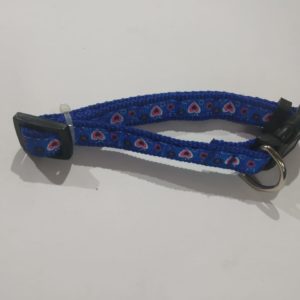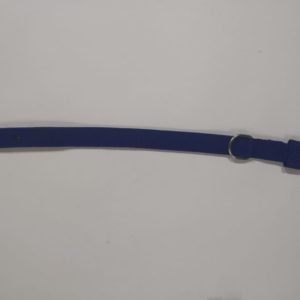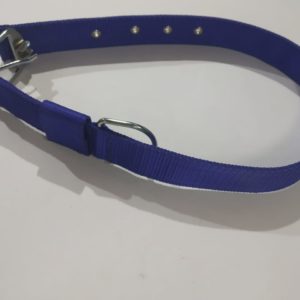
Why you should not ignore, Itching (Pruritus) in Dogs & Cats.

Pruritus is defined as an unpleasant sensation within the skin that provokes the desire to scratch. Itching is a sign, not a diagnosis or specific disease. The most common causes of itching are parasites, infections, and allergies. There are many skin diseases that do not initially cause itching. Itching may develop because of secondary bacterial or yeast infections. It is possible that by the time itching develops the initial cause is long gone.
A dog with pruritus will excessively scratch, bite, or lick its skin. Itching may be general or confined to one area. Your veterinarian will perform a thorough skin history and physical examination. Parasites, including mites and fleas, are the first possible cause your veterinarian will seek to exclude.
Next, your veterinarian will look for infectious causes of skin disease. Bacterial and fungal infections are common causes of itching. Infections are often accompanied by hair loss, scaling, odor, and fluid discharge. Excessive scratching, rubbing, or licking of the feet and face are common in animals with concurrent yeast and bacterial infections. If such an infection is suspected, your veterinarian will often prescribe a 21- to 30-day course of antibiotics.
If the itching goes away after antibiotics, then the cause was a microbial infection. However, if the dog’s itching is unchanged or only somewhat better, the most likely underlying cause may be an allergy. The most common causes of allergic itching are insect bites, food allergy, and a reaction to allergens in the environment, such as pollens, molds, or dust. Sensitivity to insect bites is readily identified by response to insect control. Dogs that have seasonal itching are likely reacting to seasonal allergens. Dogs with year-round allergic itching may have an environmental allergy (such as dust mite allergies) and/or a food allergy. Food allergy is confirmed or excluded based on response to a diet trial. During a diet trial your dog is fed a diet that does not include the foods it has normally consumed. Your veterinarian will specify a diet, often one containing fish or other meats not previously fed. To help your veterinarian isolate the food allergy, you will need to follow the prescribed diet fully and carefully and avoid providing treats that do not comply with the diet. Allergy testing and intradermal skin testing are also used to show antigen exposure patterns. These tests are used to determine the contents of an immunotherapy vaccine, but are ineffective in identifying food allergy.
The most common causes of itching are parasites, infections, and allergies. There are many skin diseases that do not initially cause itching. Itching may develop because of secondary bacterial or yeast infections. … A dog with pruritus will excessively scratch, bite, or lick its skin.
Immediate Care
Note: Uncontrolled scratching can lead to self-inflicted injuries, or rarely, in the case of some allergic reactions, to anaphylactic shock.
- Restrain the dog.
- Check the dog’s skin, especially in the itchiest areas.
- If you can identify the cause of the itching—such as insects or spiders—remove it.
- Apply cold compresses to the itchiest areas for about 15 minutes.
- An oatmeal dog shampoo may provide some temporary relief in many cases. Even better, some shampoos contain phytosphingosine salicyloyl, which is a skin calming agent.
- If the dog’s scratching is intense, administer an antihistamine such as diphenhydramine (Benadryl®) (call your veterinarian for the correct dose).
- If the scratching continues, gets worse or has no apparent cause, take the dog to the veterinarian for a full physical exam and basic laboratory testing.
Veterinary Care
Diagnosis
Diagnosis of dog scratching variably involves skin scrapes, impression smears, ear swabs and other basic methods to analyze the skin and its potential parasites/infectious agents. Response to treatment with certain products or medications is another helpful resource that may prove necessary. Allergy testing through food trials and blood or skin tests may be necessary as well.
Treatment
The treatment for scratching, itching, chewing, licking and biting (also known as pruritus) requires an initial diagnosis. Only then can the approach to treatment be determined. Treatment may include anything from shampoos, dips and cream rinses to dog antibiotics, antifungal medications for dogs, parasiticides and immunosuppressants (like corticosteroids and cysclosporine). Recently, several dog medications have become available to specifically treat itching in dogs.
Food restriction and hyposensitization protocols may also be in order (as for food and environmental allergies, respectively). It is best to seek advice from your veterinarian before trying a food restriction plan to ensure it is done safely and successfully.
Prevention
Fleas and some mites may be prevented with a variety of prescription flea and tick meds. Ask your veterinarian for a product and/or drug recommendation. Otherwise, allergies have no specific means of prevention—only management of symptoms.
Successful treatment depends on identification of the underlying cause. Dogs whose cause of itching cannot be identified, or those in which treatment of the underlying disease does not eliminate the itching, will require medical management for pruritus. Commonly prescribed anti-itching medications include glucocorticoids, and essential fatty acids, cyclosporine, and oclacitinib.
Treating itchiness with antihistamines is common, but their success in treating itching is highly variable. Current research does not support the use of antihistamines for itching relief in dogs.
Glucocorticoids are anti-inflammatory steroids. They are often considered the most effective drugs in the management of itching. However, these drugs can cause adverse side effects, including excessive hunger, thirst, and urination. These drugs also suppress the function of the adrenal glands and increase the risk of diabetes and secondary urinary tract infections. Thus, these medications are prescribed only in limited circumstances. Topical sprays that contain glucocorticoids may provide an effective alternative to pills, as long as they are used appropriately. The use of glucocorticoids to control itching caused by infections is inappropriate.
Modified cyclosporine and oclacitinib are other drugs used to manage itching. Your veterinarian will recommend a medication appropriate for your dog.
Essential fatty acids are rarely effective as sole anti-itch agents; however, they may be successful when used longterm.




